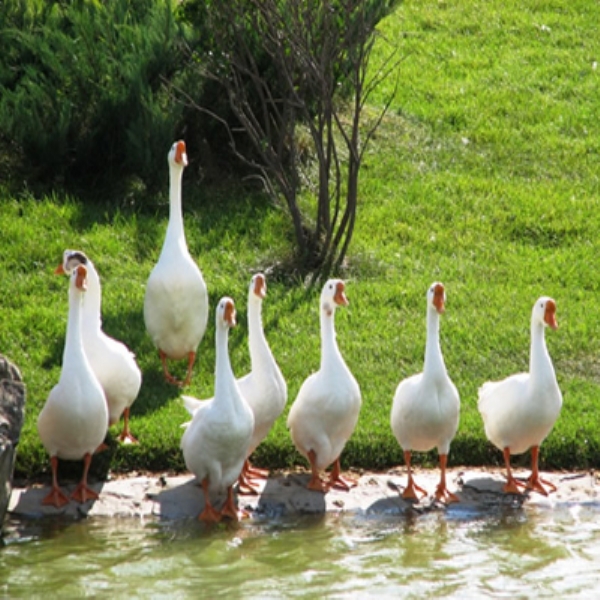Key moments in goose breeding
Several Key Moments in Gosling Breeding
In the process of breeding, it is crucial to master several important periods, from the hatching of goslings to adult geese. There are a few significant turning points during this time. Each of these changes should be given sufficient attention by gosling breeders because the feed and temperature required at different stages of goslings are closely related. During the egg-laying period of goslings, the main focus is on indoor feeding with outdoor grazing as a supplement. The geese should be fed three times a day, each time with 100-150g of compound feed, and the grazing should be slow, choosing flat areas.
Insulation for Young Goslings: From 0-7 days old, the indoor temperature should be maintained at 28-30℃, decreasing by 1℃ per day until reaching normal temperature. Humidity: A relative humidity of 60%-65% is ideal, and dryness should be maintained. Density for gosling breeding: For 0-7 days old, 25 per square meter; for 8-21 days old, 13-15 per square meter; after that, 10 per square meter. Watering: After 7 days old, choose a sunny day, drive the goslings to shallow water and let them go into the water freely, gradually increasing the watering time. When do goslings need to graze? Starting from 14 days old, choose a sunny day to drive the geese to the grassland for grazing, getting some sunlight and adapting to the environment. Middle Goose Period: From 30-80 days old is the middle goose period. Due to their strong ability to forage and digest, and high disease resistance, the main focus is on grazing combined with supplementary feeding of middle goose feed.
Fattening Period:
(1) Grazing Fattening: Let the geese graze when crops are harvested, and they will be fattened once the crops are harvested.
(2) Indoor Fattening: Use complete compound feed for free feeding.
(3) Forced Feeding Fattening: Use cornmeal balls for forced feeding three times a day, and they will be fattened in 10 days.
Reserve Period: Gradually transition from mainly concentrated feed to coarse feed and then to mainly grazing, allowing the breeder geese to reach physical maturity and sexual maturity, maintaining a consistent weight until the start of laying.
停产期:鹅产蛋8~9个月后,开始进入停产换羽期,这时,由精料改为粗料,以放牧为主,全饲为辅,使羽毛脱换,准备下次产蛋。
停产期: After 8-9 months of egg-laying, the geese enter the non-laying molting period. At this time, switch from concentrated feed to coarse feed, mainly focusing on grazing with full feeding as a supplement, allowing the feathers to molt and prepare for the next egg-laying cycle.
